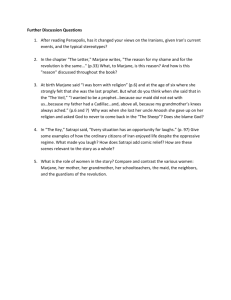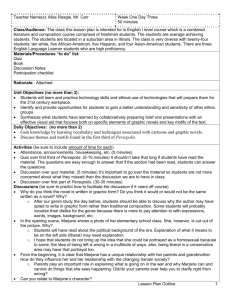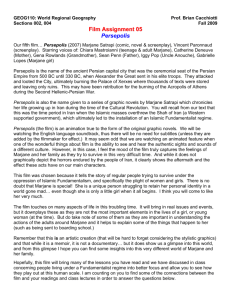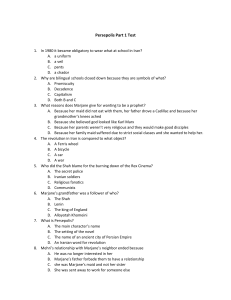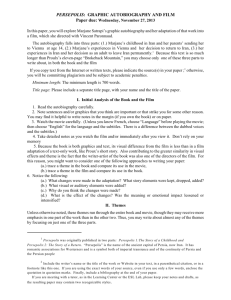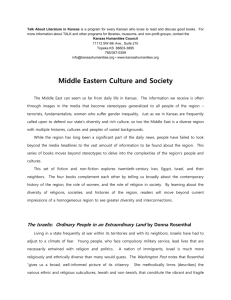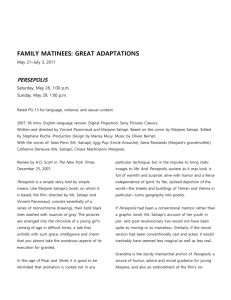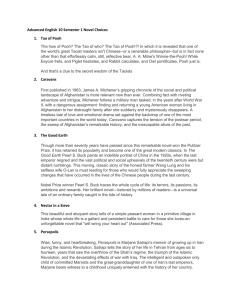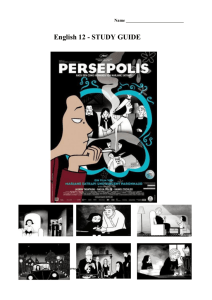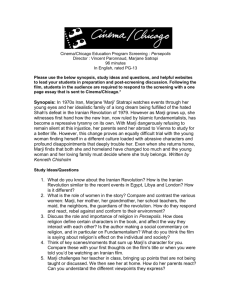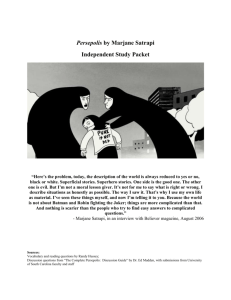Persepolis Discussion Questions: Book One & Two
advertisement
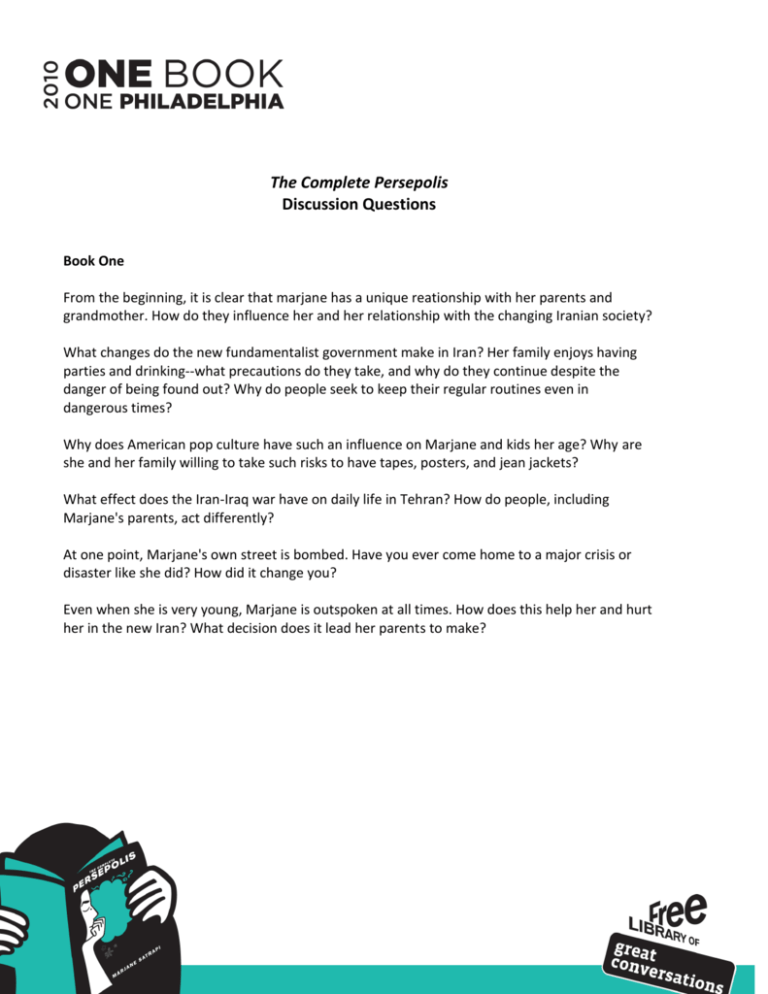
The Complete Persepolis Discussion Questions Book One From the beginning, it is clear that marjane has a unique reationship with her parents and grandmother. How do they influence her and her relationship with the changing Iranian society? What changes do the new fundamentalist government make in Iran? Her family enjoys having parties and drinking--what precautions do they take, and why do they continue despite the danger of being found out? Why do people seek to keep their regular routines even in dangerous times? Why does American pop culture have such an influence on Marjane and kids her age? Why are she and her family willing to take such risks to have tapes, posters, and jean jackets? What effect does the Iran-Iraq war have on daily life in Tehran? How do people, including Marjane's parents, act differently? At one point, Marjane's own street is bombed. Have you ever come home to a major crisis or disaster like she did? How did it change you? Even when she is very young, Marjane is outspoken at all times. How does this help her and hurt her in the new Iran? What decision does it lead her parents to make? Book Two Marjane says that her life in Austria felt like “playing a game by somebody else’s rules.” What does she mean by this? Does she have to play by “somebody else’s rules” to survive in her new home, or not? How do you think Marjane and her mother’s relationship have changed since Marjane left Iran? Do you think they are closer or more distant now that they live in different countries? When she returns to Iran, Marjane decides never to tell her parents about her "misadventures" in Europe. Do you think she made the right choice? What about the fact that she eventually wrote this book? Marjane says that "fear has always been the driving force behind all dictators' repression." In what ways are young people in Iran repressed, and how do they rebel against this repression? Why does Marjane finally decide to leave Iran? Do you think she will follow her mother's instructions and never return? Why do you think Satrapi ultimately chose to write this book, and why did she write it in this visual way? What does the reader gain from the graphic novel format?
